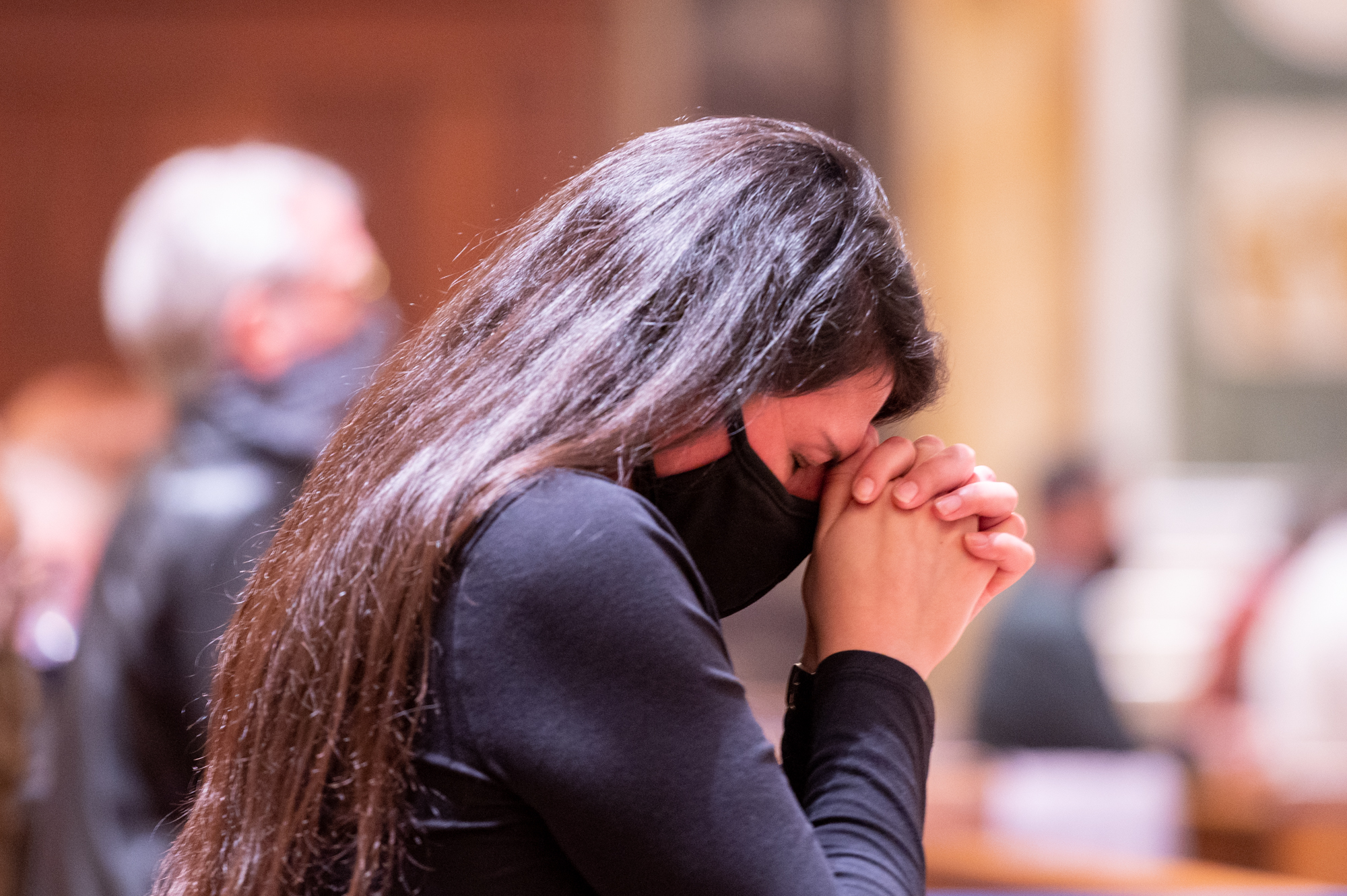I was in the St. Matthew’s Cathedral sacristy preparing for Mass when one of the cathedral staff personnel came in, waved to Msgr. Jameson, the rector, and said that she was sending him a New Year’s Day air-hug. I’ll bet there were a lot of such virtual hugs and embraces exchanged throughout the Archdiocese of Washington during this Christmas season. People miss being able to greet friends and relatives with a warm physical expression of affection and closeness. These human exchanges are among the numerous measures that we have had to set aside during this past year. And I, for one, cannot wait until we can reclaim many of the gestures and actions that the pandemic has caused us to forsake.
While most folks understand and accept the reasons we have had to refrain from close physical contact with other people, their absence has been a loss that we hope will soon be rediscovered.
Each person has probably discontinued some customs that they value. People who prefer to receive the Eucharist on the tongue have taken the host in their hands for the safety of all. People who love the choir Mass have forsaken hearing and singing along in the music that lifts their spirits. Youngsters who love to assist at the altar have stayed in the pew with their family to avoid close contact with others in the sanctuary. Some folks who prefer to linger in church praying for awhile after Mass have had to leave promptly so that sanitizing could prepare the building for the next liturgy.
While we know and believe that the Lord Jesus is fully and completely present in the Sacred Host, many folks also long to share once again in the Eucharistic Cup that expresses a fuller sign of Communion [Catechism of the Catholic Church 1390]. The Sign of Peace over the past generation has become a treasured gesture of unity among all members of the assembly that we have had to pause until this pandemic virus is no longer a threat. In short, we have halted a great many procedures and gestures that allow the celebration of the Eucharist to manifest a more complete symbolic expression of the unity and the participation of the entire assembly in the sacrifice of the Mass. I, for one, look forward to their resumption.
There have been many articles in social media describing what people are longing to take up once again – travel, dining in restaurants, life without masks, and regular workout sessions. Each of those desires may well be worthwhile and certainly even beneficial. However, being together in prayer and worship are not inconsequential or unimportant since they are a source of the hope and the fortitude that has and continues to sustain us during this stressful moment in human history.
Pope Francis repeatedly has reminded us that we will exit this crisis either better than we entered it or worse than we were before it began. Please God let that second scenario not be the case! In whatever way we exit, we will do so together, not as individuals. In other words, the crisis can and should bring us closer together as sisters and brothers. If that indeed is the case, then all of the pain and the sorrow that the pandemic has left in its wake will be another way that God can employ to draw us together as His children.
There is a phrase in the Easter Vigil liturgy that always captures my heart when I hear it proclaimed in the Exultet [the Easter Proclamation] – “O Happy Fault that earned so great, so glorious a Redeemer!” Even Adam and Eve’s sin was used by God to bring redemption to a fallen humanity. May this pandemic result in a similar prayer of blessing at its conclusion because it has served to unite us more perfectly in ways that we could not have envisioned before it began.








